5 Reasons for Cities To Adopt Smart Technology
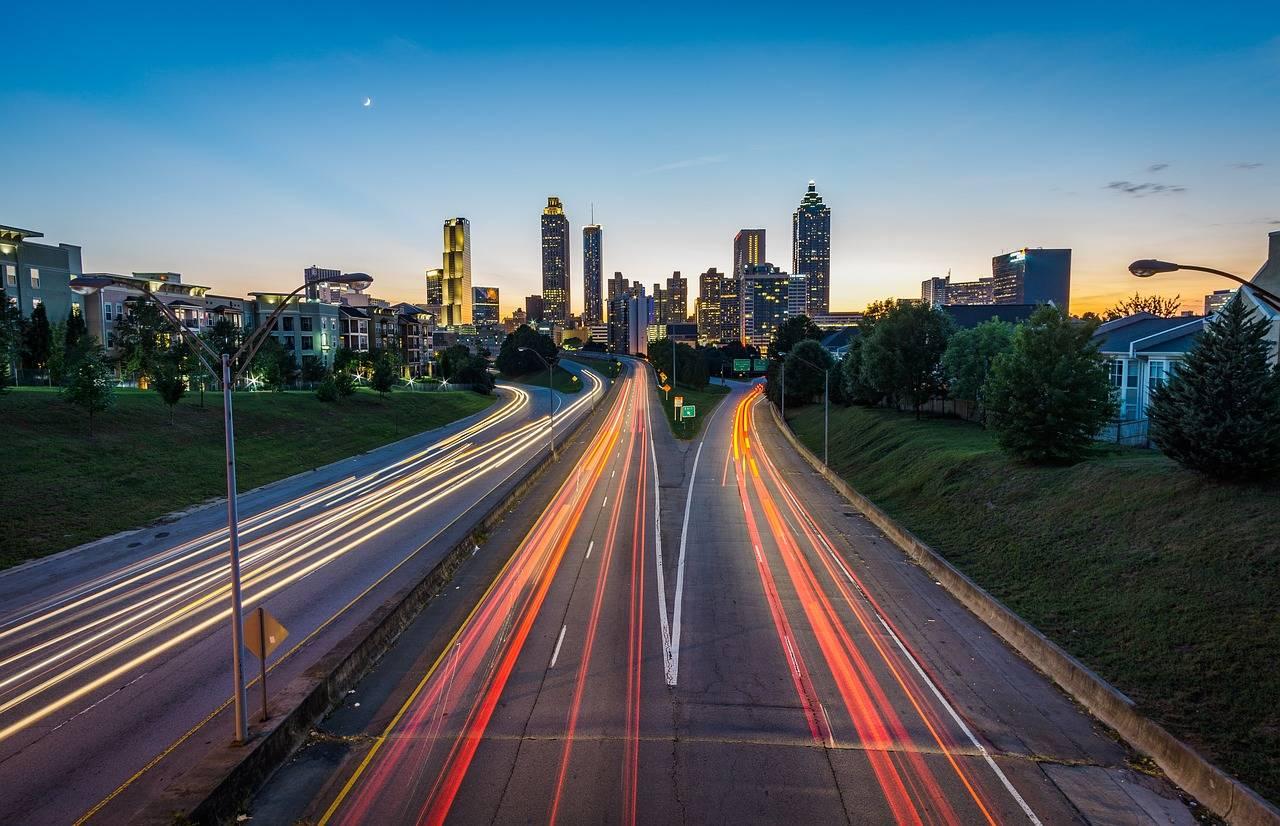

By Alice Williams
When you hear about the latest smart technology, chances are it's some new smart home device. More people protect their homes with smart security systems, check their energy use with smart thermostats, and cut utility bills with smart lights. While smart homes are a great start toward individual sustainability, a broader approach is needed to make a real impact.
Enter the smart city. These high-tech metropolises use smart technology on a large scale to streamline operations, reduce waste and address environmental concerns. They act as world leaders in efficiency and sustainability.
More municipalities, large and small, need to get on board with the smart city trend — and here are five reasons why.
1. Lower emissions
Cities that implement smart traffic management and parking systems can reduce carbon dioxide emissions by roughly 32 million metric tons annually over the next five years—equivalent to removing some 35 million vehicles from the road each year.
Smart sensors and software can reduce traffic through phased traffic lights, monitored parking spaces, traffic-tracking drones, and real-time road updates. Cities with this level of traffic outfitting are cutting residents’ time on the road, thus reducing the amount of pollution generated.
2. Smart electricity use
Cities are big energy consumers: They represent 75 percent of global primary energy consumption. But smart tech can help drastically cut that usage.
Municipal governments could, for example, make huge strides with lighting alone. Research shows that traditional lighting methods can eat up 40 percent of a municipality’s electricity bill. By upgrading to smart street lights — which use LED bulbs, sensors that adjust brightness based on weather, and monitors that turn lights on or off with traffic flow — cities can save 50 to 70 percent on electricity costs.
Beyond lighting, many interconnected technologies can sync to analysis dashboards, allowing government workers to identify areas of high use and plan for improvements accordingly.
3. Smaller overheads
Upgrades in artificial intelligence technology can save municipalities big bucks by eliminating inefficiencies in current processes. Money-saving tech advancements that are in development include smart trash bins that notify collection crews when they’re full, drones that change lightbulbs, and programs that help people sign up for automatic bill payment.
While not every process can be automated, there’s substantial room for mechanizing some of the more mundane or time-consuming tasks that eat up government workers’ time. That efficiency, in turn, could easily reduce both wasted time and wasted capital.
4. Water conservation
In urban populations, over half of water use occurs outdoors. Fortunately, smart technology can make huge inroads in outdoor water conservation. Cities can implement large-scale smart sprinkler networks, with high-tech systems that activate and deactivate based on weather and soil moisture. Smart irrigation systems can also alert maintenance crews of leakage issues to prevent wasted water from undetected leaks.
Beyond smart sprinklers, new storm water collection processes, like permeable pavement and retention ponds, can lead to further cost savings for cities. By outfitting storm water storage tanks with monitoring technology, cities can identify new processing strategies to more efficiently use water that might once have been lost.
5. Waste reduction
Smart trash cans can hold more trash by automatically compacting it, helping cities reduce trash pickup from fourteen times per week to as few as three. They can also help prevent messy trash overflow and resources needed to clean those spills.Pay as you throw (PAYT) systems — where sensors monitor the weight of residents’ trash output and charge for pickup based on those numbers — are also gaining traction. PAYT systems encourage residents to recycle and think twice about the waste they create.
As city center populations grow and environmental impacts increase, cities need to find a way to better manage urban development. If you’re not a political leader, contact your elected officials and encourage them to use smart technology in your city. Check out your city’s website for the contact information for your local city council. For larger-scale concerns that would touch on your senator or representative, use the U.S. government website to find out how to reach them.
Image credit: Pexels
Alice Williams is a communications professional with an MA in Communication Studies. In her spare time, she freelances and blogs about health and wellness over at www.honestlyfitness.com.
Congress Taps Little-Used Law to Repeal Obama Regulations


Last week Congress began employing a new tactic to repeal a slew of environmental regulations that Barack Obama implemented in the last few years of his presidency.
Their success hinges on a little-used law that allows Congress to "disapprove" any recently passed regulation with a simple majority and the sitting president's approval.
The 1996 Congressional Review Act (CRA) presents a candy store of opportunities for the Republican-led Senate and House, ranging from environmental regulations to extended requirements for gun purchases for some individuals with mental disabilities.
Under the CRA, Congress can vote to repeal regulations that were passed after June 13, 2016. Also called the "midnight rule," the CRA has only been used once. In 2001, then-President George W. Bush disapproved an Occupational Safety and Health Administration regulation related to standardizing the use of ergonomics in the workplace.
But by the end of last week, the House and Senate succeeded in voting for the repeal of five of some 50 rules currently on the chopping block, stripping away both civil and environmental protections.
One of the first regulations to be dumped was a rule preventing coal mining waste from being discharged into public waters. The stream protection rule would have also required new mining operations to develop a plan and a fund ahead of time to restore any streams that were polluted during operation.
Sen. Mitch McConnell (R-Ky.) called the regulation an "attack against coal minors and their families." The repeal was 54-45, paving the way for a likely approval by President Donald Trump.
On the same day, the House voted to repeal a regulation that extended the screening process for individuals with mental disabilities seeking to buy a gun.
The Social Security gun rule, which was put in place following the massacre at Sandy Hook Elementary in Connecticut, required the Social Security Administration to submit information for any recipient diagnosed with certain conditions who later sought to purchase a firearm.
The House voted to repeal the rule 235-180, and it is now awaiting ratification by the Senate.
Another regulation that came under fire in the House is the controversial "blacklisting"contractor rule, which placed contractors under an additional layer of scrutiny designed to block those who have legal violations on their record from being granted a federal contract until they have made changes to their operations.
The rule didn't actually blacklist contractors, but it did require applicants to address performance issues before being issued a new contract. The rule was voted down 236-187.
But the real bonus of the week for opponents of Obama's environmental legacy arrived on Friday with the repeal of the controversial methane waste rule, which required oil and gas companies contracting on federal and tribal lands to reduce methane leaks by capturing the greenhouse gas and reselling it.
Prior to the rule, there were no real restrictions against companies "flaring" or releasing methane as unburned gasses. The repeal punts the issue back to states, many of which have failed to implement stronger climate regulations.
House Majority Leader Kevin McCarthy (R-Calif.) said the repeal was an effort to balance overregulation of the energy market. "There are less costly and more efficient ways to achieve environmental protection without devastating American jobs and energy production," McCarthy said.
But by not capturing methane gasses, contractors are actually "squandering" lost revenue, the technical consulting firm ICF concluded in a 2015 study on behalf of the Environmental Defense Fund. The report determined that the cost to taxpayers could be as much as $330 million when oil and gas companies don't take precautions to limit the loss of natural gas at the extraction site.
The House also disapproved a rule that required companies to disclose when they pay foreign governments taxes or fees for extraction rights. The Security and Exchange Commission's landmark regulation was supposed to increase transparency in the oil, gas and mining sectors, especially in countries where human rights were a concern.
Rex Tillerson, Trump's pick for U.S. secretary of state, was a chief opponent of the rule -- which not only required his former employer, ExxonMobil, to disclose payments to foreign governments, but was also designed to increase scrutiny in countries where slave labor was documented in the mining sector.
And the repeal of Obama-era environmental and civil protections likely aren't over. Although some Republicans did not condone the use of the CRA to repeal environmental rules, its proponents probably won't have a problem passing further changes. Trump has vowed to roll back as much as 75 percent of current business regulations.
Image credits: 1) Flickr/Massachusetts Dept. of Environmental Protection; 2) Flickr/Deb Nystrom
Airbnb Ups the Ante on Refugee Commitment


A federal judge suspended portions of U.S. President Donald Trump’s controversial travel ban on Friday. The ban, issued via executive order almost two weeks ago, may be held up in the courts for a while. But press accounts still relay scenes of confusion as travelers from the seven nations in question scramble to arrive here while they still can.
Last week Airbnb said it would strive to provide free housing to people affected by the U.S. travel ban. And over the weekend the home-sharing company doubled down on its commitment to refugees and displaced persons, with a goal to provide short-term housing to 100,000 people over the next five years.
Those “people in need,” as defined by Airbnb, will initially include refugees, disaster survivors and humanitarian aid workers. In an email to members, the company also pledged to donate $4 million to the International Rescue Committee to support displaced citizens around the world.
In the meantime, Airbnb is still calling on hosts and guests to either open up their homes or send a donation to organizations that are working with refugees or other displaced people.
Intertwined in this latest email to Airbnb users is the message of acceptance, as showcased in the short-term rental service’s hotly discussed Super Bowl advertisement. Noting that some Airbnb users have suffered discrimination in the past, the company’s leadership implied that they wanted the conversation to continue on social media with the hashtag #WeAccept. As of press time, that hashtag is still trending on Twitter, although interspersed in the discussion are the lamentations of Atlanta Falcons fans along with support for Trump’s hardline immigration policy.
Airbnb’s dive into the immigration debate comes at a time when the travel industry is grappling with how to respond to the administration.
Expedia CEO Dara Khosrowshahi, who immigrated to the U.S. with his family in 1978 as Iran moved closer to revolution, told employees in an email that Trump’s executive order positions the U.S. as “inward-looking versus forward-thinking, reactionary versus visionary.” And in December, well before Trump took office and started issuing his executive orders, a poll revealed that 1 in 5 French and British travelers, along with 1 in 3 German nationals, said they had become less inclined to visit the U.S.
Meanwhile Airbnb joined 96 companies, mostly in the technology sector, to file a brief at the U.S. Court of Appeals for the 9th Circuit in San Francisco. The amicus curiae filing, which was signed by companies including Microsoft, Netflix, Intel, eBay and Apple, describes the travel ban as an attack on immigration.
Immigration, the signatories say, is “a key reason why the American economy has been the greatest engine of prosperity and innovation in history.” The brief also claims the executive order “inflicts significant harm on American business, innovation and growth as a result.”
As both the U.S. travel and technology sectors push back against the ban, others see opportunities in the controversy. More Canadian technology startups and entertainment companies are openly discussing how they could benefit by inviting stranded talent north of the border.
Image credit: Airbnb
Responsible Business Models Unlock Market Worth US$12 Trillion
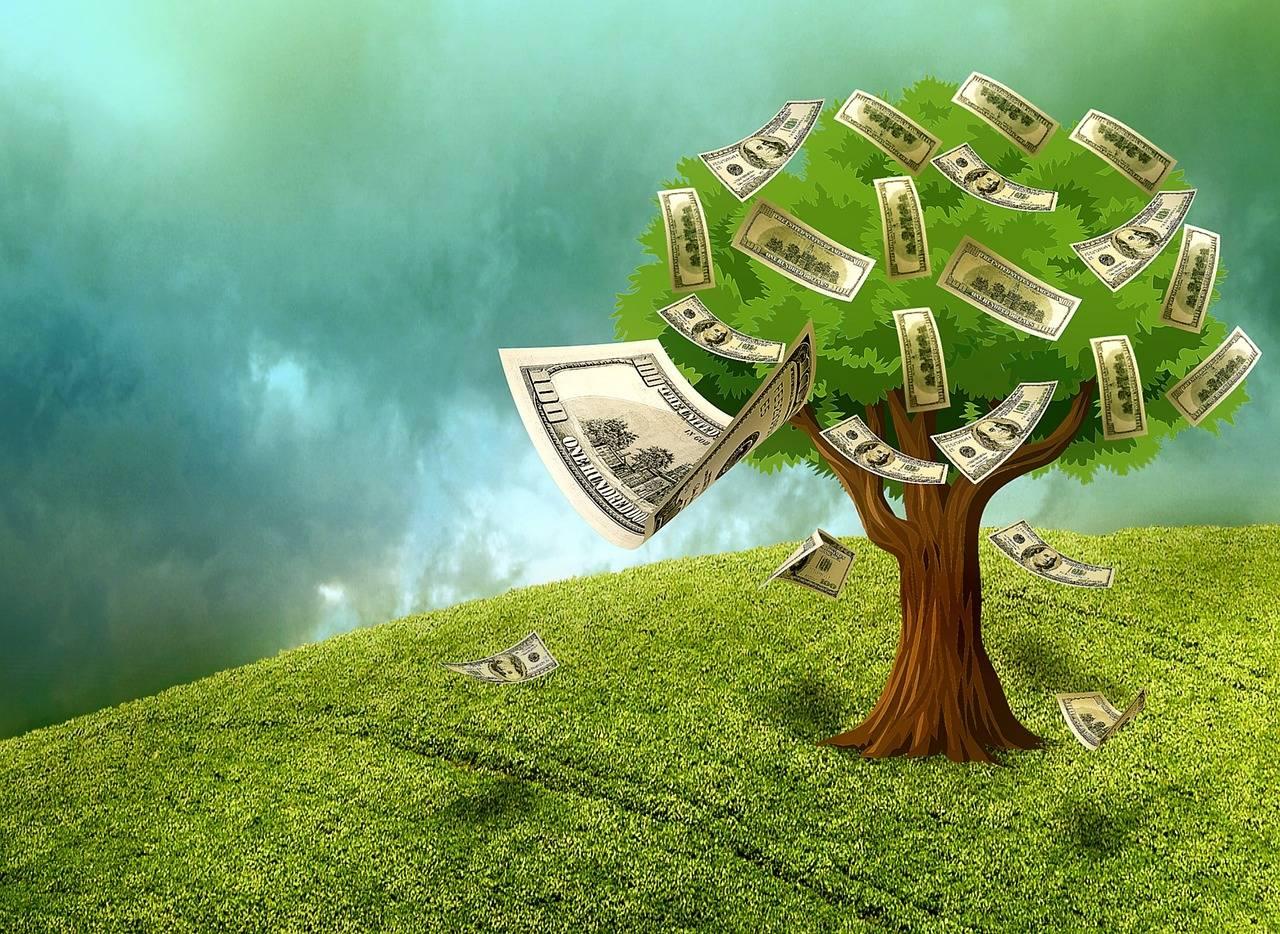

By Abha Malpani
The business case for adopting sustainability goals into a company’s strategy is still under debate. It faces resistance as organizations find it more aspirational than practical, and struggle to put a dollar value on return on investment.
A report released at the World Economic Forum by the Global Business and Sustainable Development Commission aims to change this mindset by mapping a US$12 trillion economic prize for businesses that develop responsible models as part of their core strategy, using the U.N. Sustainable Development Goals (SDGs) as a framework.
The report cites over 25 case studies of giants such as Nissan, Unilever, Mahindra, Ericsson and Merck, as well as 'disruptive innovators' like Safaricom's M-Pesa, TransferWise, Peek Vision, and Bla Bla Car -- which have successfully tapped into opportunities by addressing some of the world's most pressing challenges such as climate change, economic inequality, and the gender gap.
Compelling cases are of those working to increase financial inclusion of adults without bank accounts. Financial inclusion, although not an explicitly defined SDG, is an enabler of development and therefore key to achieving SDGs.
According to the World Bank, 2 billion adults are still unbanked -- the majority being the poor and women without equal opportunity. Help them be included in the financial system and you have access to a huge market of opportunities, one of which is remittances. In 2015, global remittances totaled US$581.6 billion of which $431.6 billion were to developing countries.
Companies like M-Pesa and Transferwise have profited from this market by enabling remittances via peer-to-peer transactions at a much lower cost than banks. The report cites that in Kenya for example, 43 percent of GDP in 2013 flowed through M-Pesa -- supporting over 237 million peer-to-peer transactions, more than any other such system in the world. According to Bloomberg, in 2015-2016 M-Pesa had transactions worth $52.6 billion, equivalent to 85 percent of the total national economic output.
Sustainable business is the cash cow of the future
The report argues that the world’s current economic model is flawed because it fails the Brundtland test. In other words, the economic and social gains over the last 30 years have compromised the ability of future generations to meet their own needs. This is because current growth drivers, such as the use of fossil fuels and rapid urbanization, are no longer sustainable.
The report also proposes an action plan for companies to adopt new business models that will not only be responsible, but will deliver a return on capital.
What goals are the most lucrative?
According to the report, 50 percent of the “prize money” can be found in developing countries in Asia, Africa, Latin America and Eastern Europe. It maps 60 market opportunities worth a total of $12 trillion for companies that develop business models addressing challenges in: food and agriculture ($2.3 trillion); urbanization ($3.7 trillion); energy and materials ($4.3 trillion); and health and wellbeing ($1.8 trillion), in today's prices.
In addition, the report estimates that achieving SDGs in these sectors by 2030 could create 380 million jobs, mostly in developing nations.
Sustainable development ‘unicorn’ business models
The report identifies a wave of more than 30 new businesses with market valuations over $1 billion that are capitalizing on these opportunities by adopting five new business models: sharing, circular, lean service, big data and social enterprise.
Examples include: Didi Chuxing, a Chinese ride-sharing company, estimates it cut 13.5 million tons of carbon emissions per day in 2015. And GuaHao, a Chinese mobile medical consultation platform that connects patients and doctors via the internet is dramatically improving access to healthcare in China and is now valued at $1.5 billion.
The report also predicts that sustainability will lead disruption over the next 15 years and converge with digital technologies, a route inevitable for businesses looking tap long-term opportunities.
Too good to be true? Not if we think long-term
In today’s volatile world, faster results, short-term gains and easy liquidity drive business decisions. The increasing destructive impact this is having on the environment and social equality is not sustainable, nor is the rising cost of inaction. For example, the cost of environment damage alone could reach up to 18 percent of global economic output by 2050, up from around 3.1 percent (or US$2 trillion) in 2008.
Needless to say, capital investment is required to modify the profit-led business path to include sustainability. The report estimates that cost to achieve the SDGs stands at $2.4 trillion annually, less than one percent of increasing global financial assets that exceed $290 trillion today.
Jump onto the bandwagon or miss out
The report highlights an increasing amount of evidence demonstrating the positive correlation between sustainability and financial performance. Highlighted studies by Oxford University, PwC and Unilever demonstrate that high environmental, social and governance standards reduce cost of capital and increase customer trust -- reflecting positively on share prices.
Further testament to the economic and social value of sustainability is that over 9,000 companies have committed to the U.N. Global Compact principles. Their responsible business models allow them to efficiently tap into new opportunities, drive innovation and strengthen their reputation.
All in all, it’s a comprehensive report that serves as an inspiration and invaluable guide to aligning your business goals with goals for a better world. Worth a read.
Image credit: Pixabay
Abha Malpani is a writer and communications professional who works towards helping businesses grow in Dubai. She is a strong believer in the triple bottom line and keen to make a difference. In her endeavor to start something of her own, she co-founded Start with Something, a website highlighting stories of people and organizations that are changing the world. She hopes that what she writes will inspire her and others to start something that has an impact. She is also a volunteer member of +Acumen Corps. One day she hopes to have her own social enterprise. You can find her on Twitter @abhamalpani.
As Smog Issues Continue, Beijing Pledges to Curb Coal Consumption


Despite a continued decline in coal consumption, Beijing’s air quality index still registers stubbornly unhealthy numbers. Now, the city of 11.5 million says it plans to accelerate the fight against smog.
According to China’s official news wire service, Beijing Mayor Cai Qi said the city will adopt “extra” anti-smog measures in 2017 -- including cutting back on coal.
The move comes as evidence continues to suggest that China’s notoriously poor air quality is negatively affecting the country’s economy. For example, CNBC was one of many news outlets to report a 2016 RAND study suggesting that smog and other forms of pollution cost China 6.5 percent of its GDP annually.
In recent years the Chinese government has implemented an aggressive air pollution plan in order to reduce smog and, specifically, the noxious particulate matter of 2.5 micrometers or less (PM2.5) that can cause a bevy of respiratory health problems.
NGOs such as Greenpeace noted that such anti-pollution measures were working, as the air quality across much of Eastern China improved during 2014 and 2015. But over the past few months PM2.5 levels have edged up again in Beijing.
Meanwhile, over the weekend, the official Chinese press agency Xinhua reported that 591,000 people in China die from lung cancer annually. If the country cannot improve its cities’ air quality fast enough, estimates suggest the annual number of deaths from lung cancer could reach 800,000 by 2020. And China’s youth are paying for the country’s addiction to coal: Emissions from coal plants were linked to as many as 250,000 premature deaths across the country in 2013, the Guardian reported.
The mayor’s directive comes at a time when China has increasingly moved toward natural gas and renewables in order to slash its reliance on coal. According to one official Chinese news source, Beijing’s coal consumption reached a staggering 26.4 million metric tons in 2010. But that number has steadily declined year after year.
In December, Xinhua reported that the amount of coal used to fire power plants declined to 10 million metric tons last year. And Beijing claimed the use of cleaner fuels prevented the emissions of 39,000 million metric tons of soot and 21,000 million metric tons of sulfur dioxide into the atmosphere.
Beijing will reportedly decrease its consumption of coal by about 30 percent this year, or down to 7 million metric tons. In addition, Scientific American reported that the city plans to remove 300,000 older cars from the roads in a move to boost fuel-efficiency standards and promote cars powered by electricity and other alternative fuels.
But as Beijing shuttered coal plants, it has also turned to importing power from other cities, which raises concerns that utilities are simply outsourcing their emissions to other provinces. In addition, while China strengthened its air pollution laws in the years following the 2008 Summer Olympics, critics replied that the actual enforcement of such laws is far too weak.
Much work lies ahead if China is going to repair the damage done to its environment the past few decades as the focus on economic development superseded any concerns over the long-term damage to the country’s economy. But in recent years, China has emerged as a global clean energy leader, and last month, the country’s leadership announced that it would invest at least $360 billion in renewable power generation by 2020.
Image credit: Ilya Haykinson/Flickr
The Dawn of a Carbon Negative Future is Near
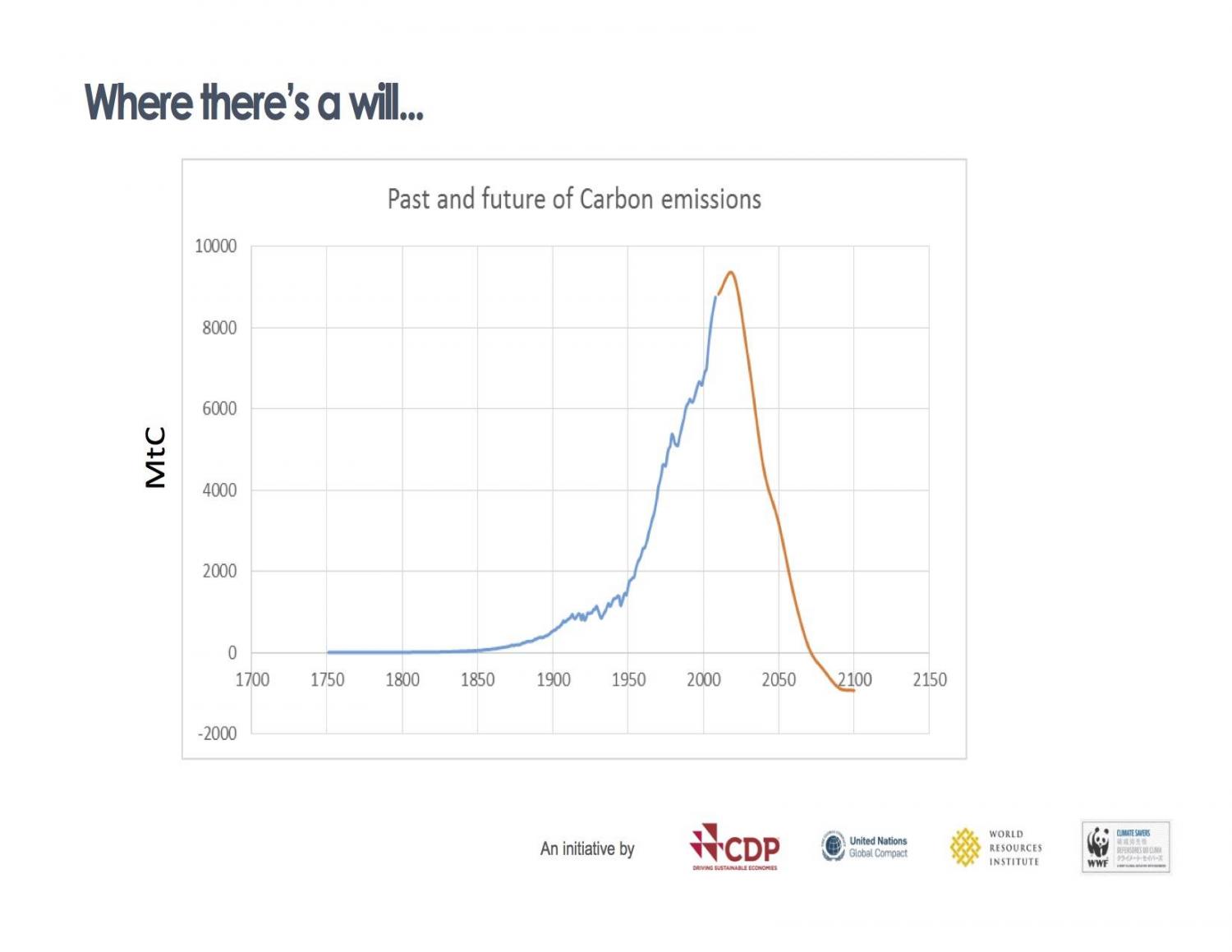

By Joe Madden
A while back, I was fortunate to catch a thought-provoking presentation by Pedro Faria, technical director of CDP (formerly the Carbon Disclosure Project), at the COP21 climate talks in Paris.
He presented the graph below above. At first glance, it appears to depict a “population overshoot scenario” in which a given population exceeds the long-term carrying capacity of its environment, resulting collapse of the population.
But in the case of Faria’s presentation, a closer look reveals that the graph is not a population overshoot scenario – it represents a future scenario in which the human community radically reduces its greenhouse emissions in a manner consistent with science-based GHG targets.
As depicted, we have a very short window to reverse the trajectory of global GHG emissions in order to stay within a “2 degree scenario” – within which we have a reasonable chance of averting catastrophic climate change.
This is a particularly daunting challenge as our planet experienced heat record after heat record in the months since 195 nations signed the now ratified Paris Agreement. Headlines -- and perhaps conventional thinking -- would suggest that the scenario Faria presented is beyond reach.
If one looks closely at Farias graphic, GHG emissions peak before 2030, fall roughly 70 percent below current levels by 2050, are non-existent by approximately 2070, and are significantly negative by 2100. That is somewhat of a “moonshot” when we consider where we are today.
Then again, for most of human history, the moon in the night sky was not considered “reachable.” Then one day, someone imagined that it just might be. Shortly thereafter (in historical terms), the moon was not only within reach, but Neil Armstrong had taken his "giant leap for mankind."
Fast forward from COP21 to the Cleantech Group’s Forum 2017 in San Francisco last week, and --for the first time -- the scenario Faria outlined 14 months prior in Paris did not seem so far off. One could see the physical manifestation of a carbon negative world beginning to emerge.
I had the opportunity to catch up briefly with Robert Niven, co-founder and CEO of CarbonCure. CarbonCure retrofits concrete plants with a technology that recycles waste carbon dioxide to make affordable, greener concrete products. Niven’s approach was simple: more value at a competitive price.
Carbon Engineering, which captures CO2 from ambient air to make fuel, and Lanzatech, which uses proprietary microbes to create chemicals, bioethanol and jet fuel from CO2 waste gases, were also in attendance at the conference.
The proliferation of such companies marks a turning point. Each of these companies, along with others like Newlight Technologies, are leveraging the “carbon cycle” to create the materials that build and power human society. In the case of these products, what is most impressive is the potential for scale. Last year, Newlight signed a 10 billion pound production license with Ikea.
These are not cute products aimed at LOHAS customers. These are the material building blocks of our global society and economy -- concrete, plastics, fuels, steel, etc. -- which pose some of the largest challenges we face in our race to decarbonize. If we can address these areas in scalable, economically viable ways, carbon negativity is indeed possible.
However, for this to happen at the pace required to meet science-based targets, we must accelerate the integration of carbon negative materials into human systems. To do so, we must think systemically about material flows within and across business sectors and borders and then design policy frameworks and information infrastructure to support the systems-based approach necessary to scale these approaches.
If carbon negative materials can be created in these challenging sectors, as the companies noted and others are demonstrating, the key to large-scale adoption is enabling these pioneering companies to unlock the financial value of the carbon stored in their products. This requires the efficient quantification, verification, and transfer of the carbon benefits contained in carbon-negative products downstream to customers, investors and insurers.
More to come on that front....
Image credit: Pedro Faria, CDP
Joe Madden is the co-founder of EOS Climate.
Extending the Lifecycle of Our Products and Services: A Better World By Design


By Mikal Hallstrup
Technology is innovating at an exponential rate. New products and services are being rolled out on an almost daily basis -- sometimes rendering their predecessors irrelevant and other times offering only cosmetic or minor improvements. But while the pace of the technology revolution increases, design innovation is failing to keep up in one key area: sustainability.
How do we make more things more sustainable? And how do we deal with them when they turn into waste? Most importantly, how does all of this apply in the new digital age, where physical and digital are blended in a way that becomes nearly impossible to separate?
Sustainability has been around for a while as an academic and boardroom agenda – a theory, a company policy, an ideology and even a marketing strategy. The latter to a large extent focuses on ‘greenwashing’ black products. From a bottom-line perspective, investing in marketing a product as “green” is probably more lucrative than investing in trying to develop products that actually are green. The reason: If we can’t make it green, let’s at least make it look green.
A few interesting corporate initiatives offer exceptions, operating at the intersection of marketing and real sustainable innovation. eBay, for example, set up a Green Team to engage customers to become more sustainable. And Dell is out to revolutionize its packaging for recyclability with the ambitious 3 Cs plan.
But putting out bins where people can “safely dispose” of outdated or unwanted computers and cell phones is no longer enough. We need to go one step further: commit to designing products that actually offer solutions to help heal and protect the environment.
To accomplish this, designers need to keep several factors in mind. First, it's time to design products that we won’t be forced to discard every year so we can get our hands on the newest and greatest product. Second, we have to minimize the energy and materials that go into developing and distributing these products. Finally, we can keep the products we no longer need out of the landfills by making materials easy to repurpose.
Learn to adapt: Products – such as smart phones and tablets – should be designed with longevity in mind. This means creating products that are adaptable and can be altered in real time to incorporate the latest technical innovations. Several attempts have been made and show that there’s still a bit of work to be to decipher the blurry intersection of convenience, usability, and modularity. And, the desire to get new things before old things die, still runs deep in the human veins.
For example, Apple’s iPhone 6 shattered sales records in late 2014 -- selling over 75 million smartphones in just four months. That’s 75 million phones that have either already been replaced by iPhone 7s, or will eventually be replaced. Rather than purchasing a brand new phone every time Apple unveils the latest iPhone iteration, imagine bringing your phone into the Apple store and receiving simple updates. These improvements could include switching out the old camera for the newest one, upgrading the software for new texting capabilities, or plugging up the headphone jack so you can use the new wireless earbuds. Basically, the skeleton of the product doesn’t need to change; it just needs to be adaptable.
That being said, Apple products have almost nine lives as opposed to disposable consumer electronics. There’s an order of succession with products being handed over from parents to children, dramatically expanding product lifetime and closing the loop in a circular economy fashion.
Less is more: This may seem obvious, but we still have a long way to go when it comes to reducing the amount of waste used to develop the products that consumers need. We must create processes that minimize the amount of energy and materials required to get a product from ideation to distribution.
Think about the shipping process alone – why stop at replacing packing peanuts with air cushions? Packaging is just one factor that contributes to waste. FedEx has a fleet of over 49,000 trucks. Think about the amount of fuel these trucks consume each day by going back and forth between distribution centers and destinations because someone wasn’t available to pick up a package or didn’t answer their door? Now, imagine if you could track your package in real time via an app on your phone, rather than relying on an email to let you know “Sorry we missed you!” You’d be able to determine what time the package would actually arrive (rather than a vague window) and ensure that someone is home to receive it.
Life after death: The good news is that technology companies around the world are already beginning to explore the possibility of redesigning products using existing materials. Doing so helps reduce the amount of waste piling into our landfills, thus potentially ensuring that every product created can have an endless lifecycle. According to the EPA, we can recover 35,274 pounds of copper, 772 pounds of silver, 75 pounds of gold and 33 pounds of palladium from just 1 million recycled cell phones. There are an estimated 2.3 billion smartphone users in the world – so that’s about 172,500 pounds of recyclable gold!
The lifecycle of the products and devices we utilize on a daily basis doesn’t have to be cut short every time the “next big thing” comes along. If designers focus on increasing adaptability, reducing waste, and sculpting products with extended – if not endless – lifecycles in mind, we can fill the world with products that are as functional and sustainable as they are flashy.
We must also think about how we – in a way that makes the most sense – can replace physical products with digital ones. No matter how we look at it, digital leaves a different, and smaller, carbon footprint than a physical product. If we can design products and services for a true and sustainable sharing economy, we’ll be well on our way to success.
Image credit: Pixabay
Mikal Hallstrup is Founder and Global CEO at Designit, one of the world’s largest strategic design firms. Designit became part of Wipro Digital in 2015. Mikal chairs the jury for INDEX:Design to Improve Life, the world’s largest monetary design award
How Investment Funds Can Make a Difference
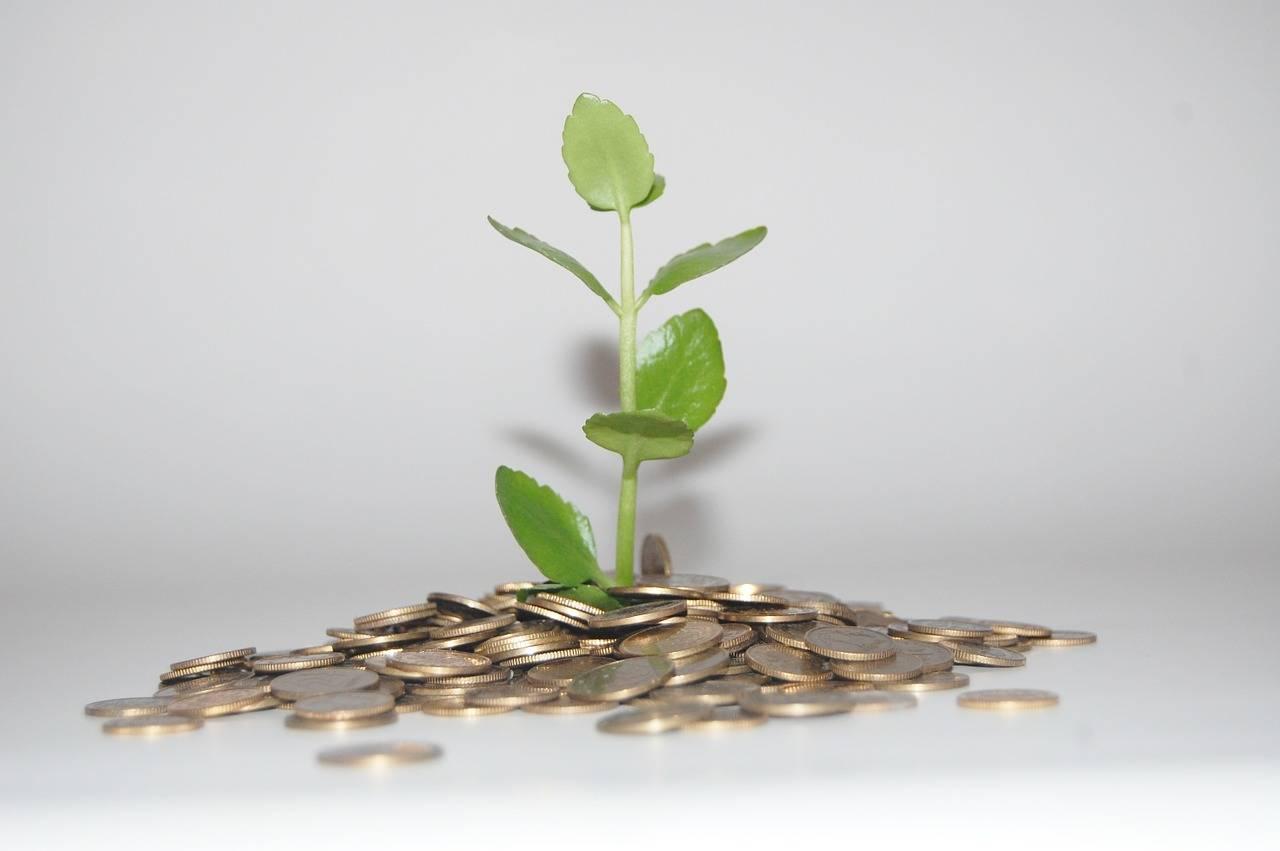

By Janet Brown
Your investments have power. How you invest your money can be a vote for the values you want to support — from fairness and equality to safety and sustainability. But how does it actually work? How do your mutual funds try to make difference in the world?
There are three strategies that mutual funds have been using for years:
Divestment: Avoid objectionable companies
For many years, funds relied on divestment. They avoided investing in certain companies or industries like tobacco or, more recently, fossil fuels.
Divestment is still an important tool, but most investors want to do more than just avoid ‘bad apples.’ They want to actively support companies that are trying to do the right thing.
Investment: Seek out companies that are trying to make a positive impact
Today, many funds invest in companies that have strong environmental, social or corporate governance policies (ESG). This is a way for the fund to mitigate risk. A company that is mismanaged could end up facing major fines or lawsuits. And importantly, it also allows fund investors to put their money behind the kinds of companies they want to support.
Engagement: Work with companies to help them move forward
Perhaps the most important way that funds are making a difference is by tapping into their power as shareholders.
When you invest in a company, you get a say in how that company operates: You can file shareholder resolutions to try to change how a company operates; you can vote on these proposals at shareholder meetings; and that’s exactly what many funds do. They invest in a company with the goal of engaging with the company and helping it do better.
Success stories: How funds have made a positive impact
Funds are using their power as shareholders to help companies move forward on a wide range of issues. Investors filed more than 400 proposals just on environmental and social issues in 2015 alone, according to the U.S. Forum on Sustainable Investing (USSIF). These efforts have led to some real results. Funds have persuaded hundreds of companies to make significant improvements.
Here are just a few of their success stories:
Fewer harmful chemicals in children’s products: Domini fund managers engaged with Target to encourage the company to reduce the use of toxic PVC plastic in children’s products. (Other major retailers, like Walmart and Sears, soon followed suit.) Today, Target has a sustainable product standard that scores 7,000 products based on toxicity.
More efficient energy use: Calvert funds has prioritized engagement with electric utilities, and 53 major corporations have committed to source 100 percent of their power from renewable energy in the next two decades.
Smarter use of natural resources: Trillium engaged with Home Depot, which was one of the world’s largest retailers of old-growth lumber at the time. Home Depot agreed to use more sustainably-sourced wood. And by 2009, Home Depot had sold more Forest Stewardship Council (FSC)-certified wood than any other company in North America.
Image credit: Pixabay
Janet Brown is the President and CEO of FundX.Janet joined FundX in 1978 and has been researching mutual funds and developing successful investment strategies ever since. A frequent guest on national media, Janet’s expertise is widely recognized. She is a board member of several non-profits and foundations and a longtime advocate for sustainable, responsible investing (SRI).
97 Top Tech Companies Line Up Against Trump


In a legal brief filed on Sunday night, 97 leading tech companies took a stand against the Trump administration's so-called Muslim ban by joining together in an extremely rare, coordinated legal action.
The news follows a series of blows to Donald Trump's widely criticized Jan. 27 executive order that abruptly banned entry to the U.S. by citizens of seven Muslim-majority countries, even if the travelers held valid visas or green cards.
The ban has already galvanized the corporate social responsibility movement, prompting companies as diverse as Amazon and Disney to bring their concerns into the sphere of national politics.
By joining forces, these 97 companies have pushed CSR even further into the role of action on a national level.
97 companies against the Trump travel ban
News of Sunday's legal action initially broke in the New York Times and the Washington Post, which provided the headline, "Apple, Facebook, Google, Microsoft and 93 other tech companies call travel ban ‘unlawful’ in rare coordinated legal action."
The Post also cited support for the action -- an amicus brief filed in the U.S. Court of Appeals for the 9th Circuit -- from Lyft, Pinterest, Yelp, Square, Reddit, Kickstarter, Github, Glassdoor, Box, Mozilla, Dropbox, Twilio, Zynga, Medium, Pinterest and Salesforce.
Post reporter Elizabeth Dwoskin described the action as one that "demonstrates the depth of animosity toward the Trump ban."
As cited in the Post, the filing makes the case that immigration is essential for the ability of companies to grow and compete:
"The [Executive] Order ... makes it more difficult and expensive for U.S. companies to recruit, hire, and retain some of the world’s best employees. It disrupts ongoing business operations. And it threatens companies’ ability to attract talent, business, and investment to the United States."
As the Times reported, other companies participating in the new legal filing include Uber, Twitter, Airbnb, Intel and Snapchat's parent company, Snap.
The Times also notes that several non-tech companies are also involved in the filing. One name that leaps out is Levi-Strauss & Co.
Back in 2011, Levi-Strauss CEO and President John Anderson rolled out a "radical" new approach to corporate responsibility in the garment industry. He argued that simply complying with agreed-upon standards is insufficient, and that companies must engage with their employees and their communities beyond the factory gates. That sense of community responsibility resonates in this filing.
One big name, Amazon, is missing from Sunday's action because the company is already credited with supporting last Friday's judicial decision -- which essentially returned travel back to normal for the time being.
Although the Sunday filing focuses on economic interests, the effect is to support the aspirations of individuals around the globe and ensure that ties with family, friends and colleagues are maintained.
The electric car company Tesla is conspicuously absent from the list, the Times reported. As of this writing, Tesla co-founder Elon Musk is still a member of at least one business group advising Trump, the Strategy and Policy Forum. As recently as last week, Musk expressed his determination to continue engaging with the Trump administration.
Another tech A-lister advising Trump in a (far) more direct capacity is early Trump supporter and billionaire investor Peter Thiel, who expressed agreement with the Muslim ban last week.
Sunday's legal action could create an awkward situation for Thiel. Among his many affiliations, he is a Facebook board member and an investor in Lyft.
Another Thiel affiliation is the startup incubator Y Combinator, where he is a "part-time partner." That could get awkward, too.
Last week, Y Combinator announced that it would take the American Civil Liberties Union under its wing, in order to support the nonprofit's crucial work against the Muslim ban. ACLU lawyers were the first to successfully challenge the ban, just one day after it took effect.
Stay tuned...
Update: Several other companies joined the brief on Monday evening, including Tesla.
Image: U.S. Court of Appeals for the 9th Circuit seal via wikimedia commons.
Denmark’s Dong Energy Jumps on Coal Divestment Bandwagon
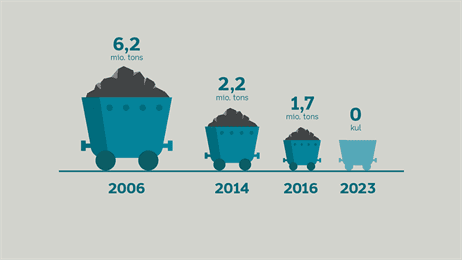

Dong Energy is the latest canary in the coal mine for the global coal industry. The Danish energy giant, which last fiscal year generated almost $9 billion in revenues, recently announced that it would phase out coal from all of its power stations by 2023.
The company’s pledge comes after it consumed 1.7 million metric tons of coal in 2016, a steep decline from a decade earlier, when the company used 6.2 million metric tons to fuel its power stations.
“The decision is in line with our vision to lead the way in the transformation to a sustainable energy system and create a leading green energy company," Dong Energy CEO Henrik Poulsen said in a statement.
The company said its last few coal fire-powered plants will transition to use biomass as feedstock.
Just last month, Dong followed through on its 2016 promise to divest from the oil and gas exploration business, which last year only comprised 4 percent of the company’s capital outlays. Those operations will be sold off by the end of this year as Dong continues to invest aggressively in wind power.
Dong has become a renewable power leader across Europe and increasingly more of the world, with its 5.8 terawatt hours (TWh) of wind and hydropower capacity. Meanwhile the company continues to be bullish on offshore wind power as it seeks to more than double its current capacity from 3 gigawatts to 6.5 GW by 2020. Should all the offshore projects in which Dong is involved launch at the end of this decade, that installed capacity would be enough to meet the electricity needs of approximately 16 million Europeans.
For those who are still not convinced of clean energy’s staying power, take a look at Dong’s most recent financial performance and business decisions. After losing $25 million in 2015, the company reported profits of $250 million last fiscal year. Dong said its overall sales declined by 6 percent, but 2016 revenues from wind power soared by 36 percent from the previous year. That continued growth in renewables in part emboldened the company to issue an IPO last summer (with the caveat that the government of Denmark is its largest shareholder, with just over a 50 percent stake).
In addition to holdings in offshore wind farms such as the 630-megawatt London Array located in the Thames Estuary, Dong is investing in similar projects worldwide. Last month the company agreed to purchase a 35 percent stake in Formosa I, Taiwan’s first offshore wind farm. Dong is also taking the emerging U.S. offshore wind market seriously, as last year it announced it would take over a proposed 1 gigawatt wind farm off the coast of Massachusetts.
The company claims it has a 26 percent market share of the world’s offshore wind power capacity, and it seeks to double that capacity by 2020.
Despite the slump in fossil fuel prices, divestment from coal and other hydrocarbons has picked up momentum across Europe as more companies and investment funds worry that deposits of these fuels could end up becoming stranded assets.
After considering a divestment strategy for two years, Norway’s sovereign wealth fund decided to relinquish its coal-related assets last April. A few months later, the municipality of Stockholm, Sweden, announced that it would divest from its holdings in coal, oil and natural gas. And last month, Ireland’s parliament voted to strip fossil fuel investments from its $8.6 billion strategic investment fund.
Image credit: Dong Energy